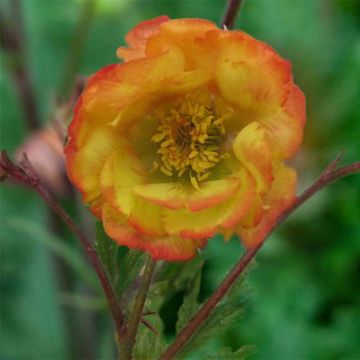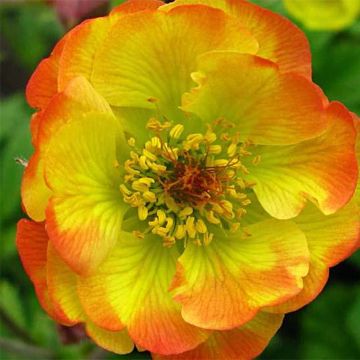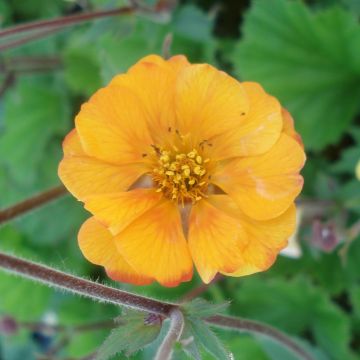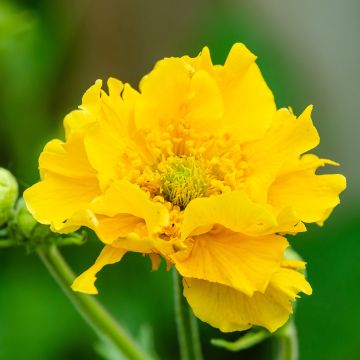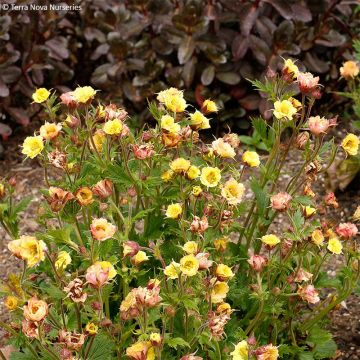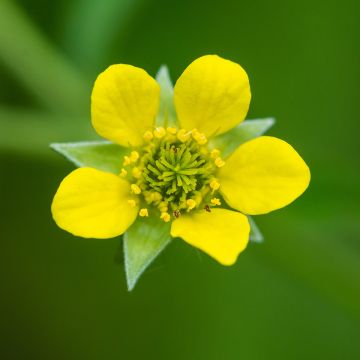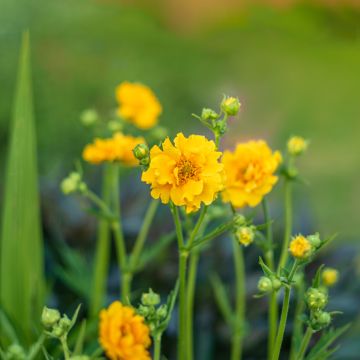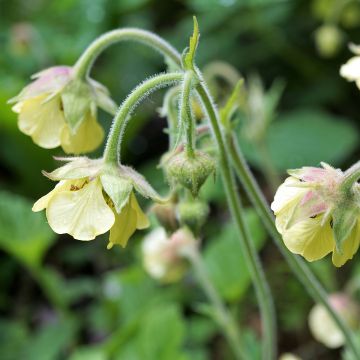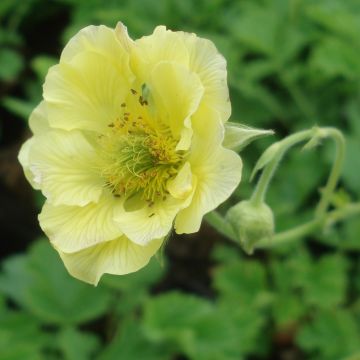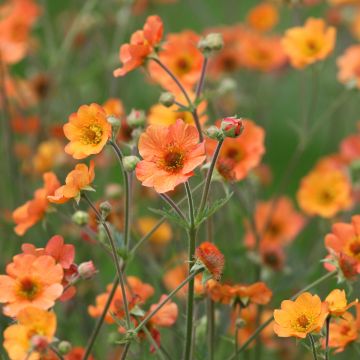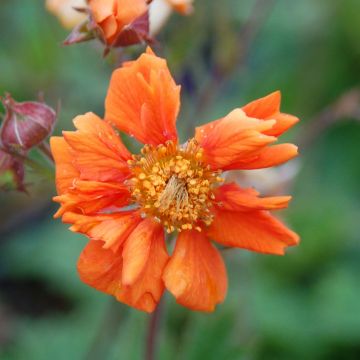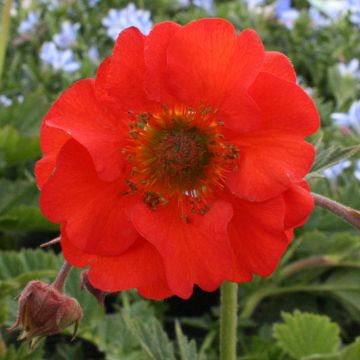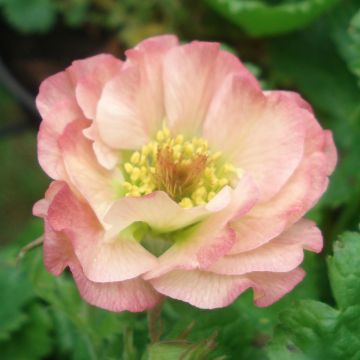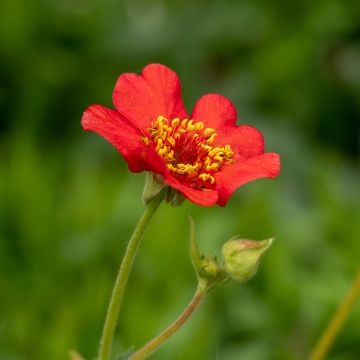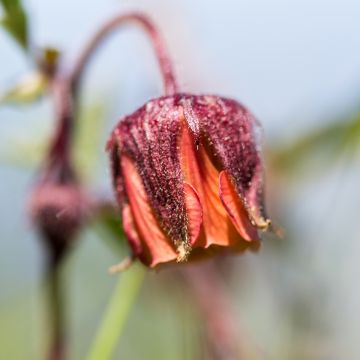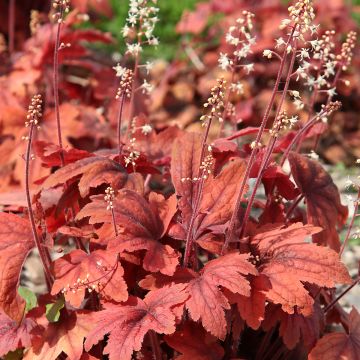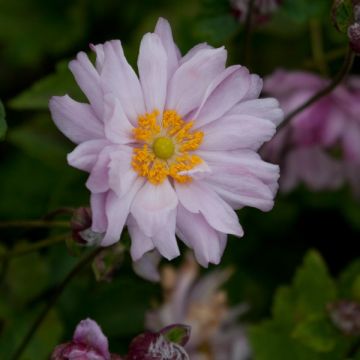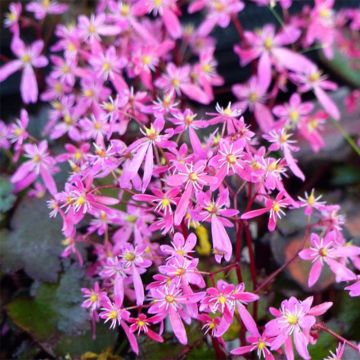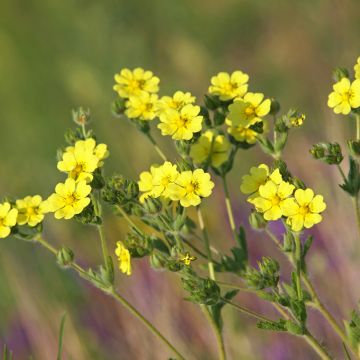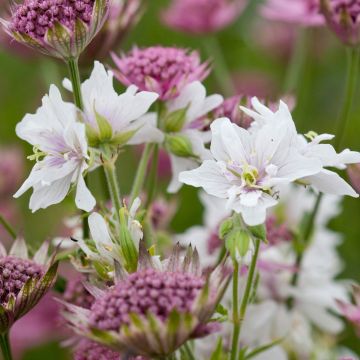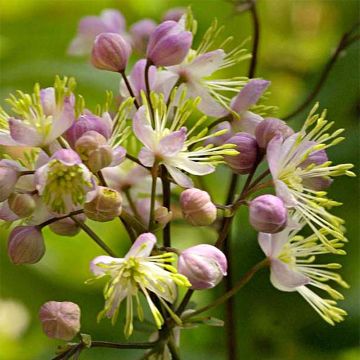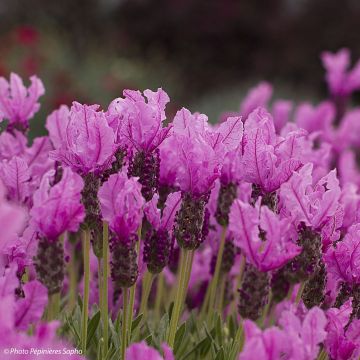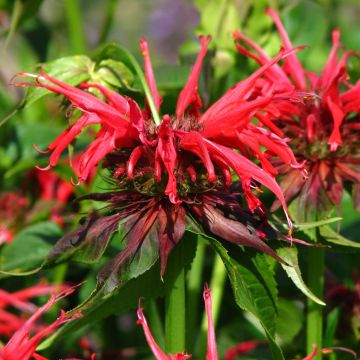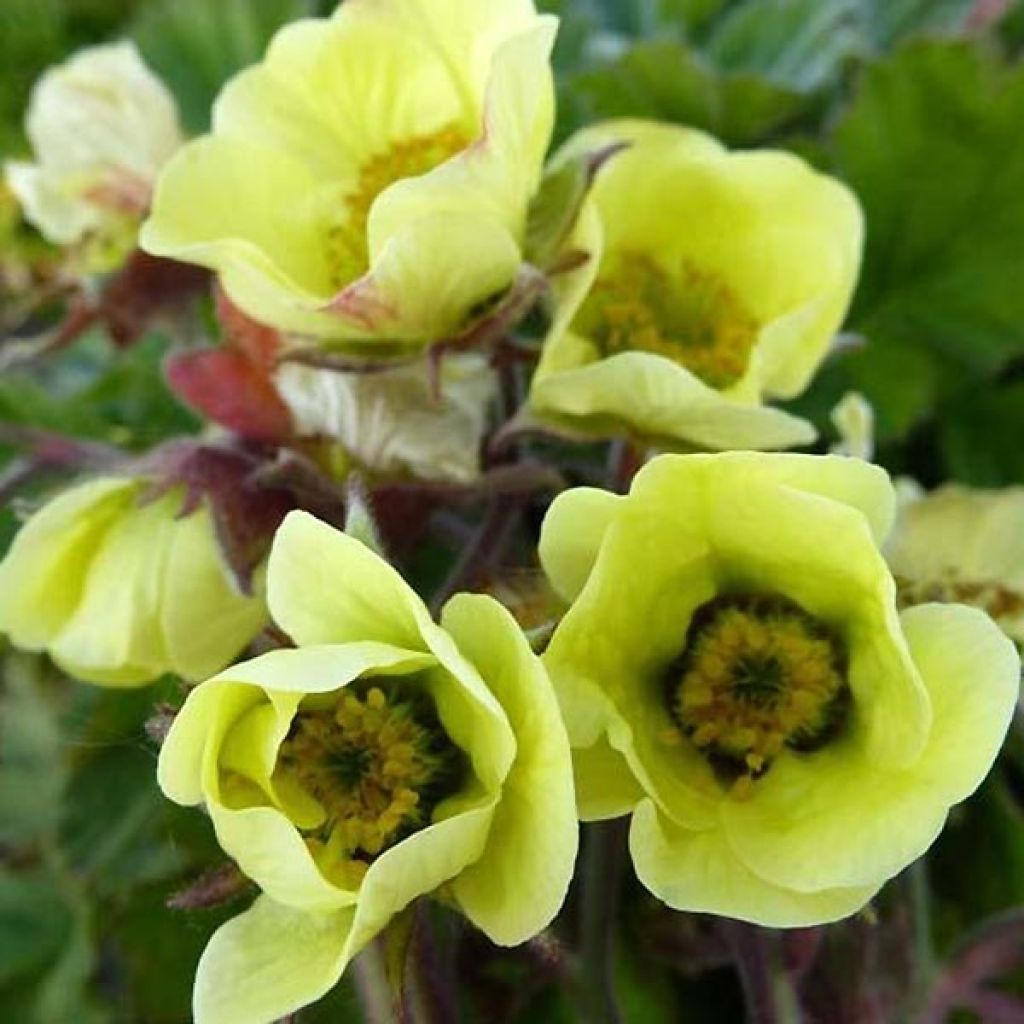

Geum rivale Lionel Cox
Geum rivale Lionel Cox
Geum rivale Lionel Cox
Water Avens, Purple Avens
Why not try an alternative variety in stock?
View all →This plant carries a 12 months recovery warranty
More information
We guarantee the quality of our plants for a full growing cycle, and will replace at our expense any plant that fails to recover under normal climatic and planting conditions.
From €5.90 for pickup delivery and €6.90 for home delivery
Express home delivery from €8.90.
Does this plant fit my garden?
Set up your Plantfit profile →
Description
The 'Lionel Cox' water avens is unique with its pendant flowers with sulphur yellow petals with a salmon-orange edge in summer. It is more compact and shorter than other varieties, not exceeding 30cm (12in) in height. Slender stems and calyxes of a complementary purple-red colour elevate the bell-shaped flowers above a tuft of green velvety leaves. A rhizomatous perennial with a bushy and open habit, this species thrives in rich, moist soils, even tolerating temporary immersion and full sun, as long as there is sufficient soil moisture. With a wild appearance, this very hardy water avens brings light to "cottage" gardens and adds lightness and subtlety to more formal flowerbeds.
Native to Europe and Asia and belonging to the Rosaceae family, Geum rivale is a hardy herbaceous perennial, hardy down to -20°C (1°F). It is found in damp places, especially in the mountains. From June to August, it bears graceful bell-shaped flowers, about 3cm (1in) in diameter, on slender, pubescent stems that timidly lean. They are delicately enveloped by large decorative calyxes. They produce plume-like dry fruits covered in hairs that catch the light. Its deciduous leaves, shaped like a lyre, are deeply lobed and toothed, with a larger trilobed terminal leaflet. This cultivar has an upright habit, reaching a height of 30cm (12in) and a width of 45cm (18in). Its basal clump grows from rhizomes, allowing it to effectively serve as a ground cover.
It thrives in full sun or partial shade, in slightly acidic to limestone, moist to humid, humus-rich, well-drained soil. Under ideal conditions, it self-seeds spontaneously.
This elegant plant, with its subtle colours, integrates well into cottage gardens and complements the black foliage and purple flowers of Geranium phaeum. It also fits well along water edges and pond borders with Bergenias, Persicarias, daylilies, and Polemoniums with bluish-violet flowers and glaucous hosta foliage. In a fresh rockery, associate it with creeping bugle and aubrietas. Otherwise, pair it with the warm tones of Kniphofias, Crocosmias, and Coreopsis. Its smaller size allows for planting in pots at the base of taller shrubs or perennials. Use it primarily in the foreground of your plant compositions.
The roots are aromatic and edible, with a taste resembling liquorice and cloves. Native Americans use them to make a drink similar to hot chocolate. They are used in medicine, like in Geum urbanum, for their astringent, anti-inflammatory, and febrifuge properties.
Report an error about the product description
Geum rivale Lionel Cox in pictures
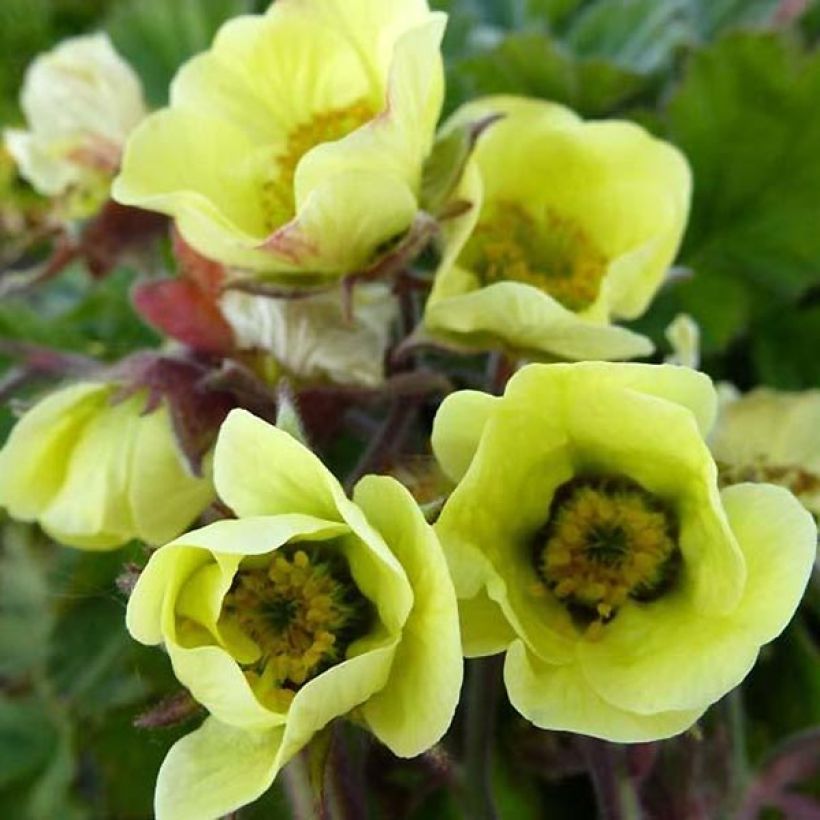

Flowering
Foliage
Plant habit
Botanical data
Geum
rivale
Lionel Cox
Rosaceae
Water Avens, Purple Avens
Cultivar or hybrid
Other Geum - Avens
Planting and care
The Brook Avens 'Lionel Cox' is a hardy herbaceous perennial plant, resistant up to -20 °. While the Brook Avens prefers cool and moist soils, it will not tolerate excessive winter humidity, so it is important to avoid waterlogged soils in winter.
Planting can be done in spring or autumn. Regularly removing faded flowers will encourage the emergence of new flower buds and ensure continuous flowering. Since Geums have a relatively short lifespan, it is recommended to divide the clumps every 3 or 4 years, either in spring or autumn. Providing organic compost at their base in spring is beneficial for them.
Highly resistant to diseases, Brook Avens can sometimes be attacked by sawfly larvae, which can damage the foliage. Excessive drought can also make Brook Avens susceptible to powdery mildew.
Planting period
Intended location
Care
This item has not been reviewed yet - be the first to leave a review about it.
Summer flowering perennials
Haven't found what you were looking for?
Hardiness is the lowest winter temperature a plant can endure without suffering serious damage or even dying. However, hardiness is affected by location (a sheltered area, such as a patio), protection (winter cover) and soil type (hardiness is improved by well-drained soil).

Photo Sharing Terms & Conditions
In order to encourage gardeners to interact and share their experiences, Promesse de fleurs offers various media enabling content to be uploaded onto its Site - in particular via the ‘Photo sharing’ module.
The User agrees to refrain from:
- Posting any content that is illegal, prejudicial, insulting, racist, inciteful to hatred, revisionist, contrary to public decency, that infringes on privacy or on the privacy rights of third parties, in particular the publicity rights of persons and goods, intellectual property rights, or the right to privacy.
- Submitting content on behalf of a third party;
- Impersonate the identity of a third party and/or publish any personal information about a third party;
In general, the User undertakes to refrain from any unethical behaviour.
All Content (in particular text, comments, files, images, photos, videos, creative works, etc.), which may be subject to property or intellectual property rights, image or other private rights, shall remain the property of the User, subject to the limited rights granted by the terms of the licence granted by Promesse de fleurs as stated below. Users are at liberty to publish or not to publish such Content on the Site, notably via the ‘Photo Sharing’ facility, and accept that this Content shall be made public and freely accessible, notably on the Internet.
Users further acknowledge, undertake to have ,and guarantee that they hold all necessary rights and permissions to publish such material on the Site, in particular with regard to the legislation in force pertaining to any privacy, property, intellectual property, image, or contractual rights, or rights of any other nature. By publishing such Content on the Site, Users acknowledge accepting full liability as publishers of the Content within the meaning of the law, and grant Promesse de fleurs, free of charge, an inclusive, worldwide licence for the said Content for the entire duration of its publication, including all reproduction, representation, up/downloading, displaying, performing, transmission, and storage rights.
Users also grant permission for their name to be linked to the Content and accept that this link may not always be made available.
By engaging in posting material, Users consent to their Content becoming automatically accessible on the Internet, in particular on other sites and/or blogs and/or web pages of the Promesse de fleurs site, including in particular social pages and the Promesse de fleurs catalogue.
Users may secure the removal of entrusted content free of charge by issuing a simple request via our contact form.
The flowering period indicated on our website applies to countries and regions located in USDA zone 8 (France, the United Kingdom, Ireland, the Netherlands, etc.)
It will vary according to where you live:
- In zones 9 to 10 (Italy, Spain, Greece, etc.), flowering will occur about 2 to 4 weeks earlier.
- In zones 6 to 7 (Germany, Poland, Slovenia, and lower mountainous regions), flowering will be delayed by 2 to 3 weeks.
- In zone 5 (Central Europe, Scandinavia), blooming will be delayed by 3 to 5 weeks.
In temperate climates, pruning of spring-flowering shrubs (forsythia, spireas, etc.) should be done just after flowering.
Pruning of summer-flowering shrubs (Indian Lilac, Perovskia, etc.) can be done in winter or spring.
In cold regions as well as with frost-sensitive plants, avoid pruning too early when severe frosts may still occur.
The planting period indicated on our website applies to countries and regions located in USDA zone 8 (France, United Kingdom, Ireland, Netherlands).
It will vary according to where you live:
- In Mediterranean zones (Marseille, Madrid, Milan, etc.), autumn and winter are the best planting periods.
- In continental zones (Strasbourg, Munich, Vienna, etc.), delay planting by 2 to 3 weeks in spring and bring it forward by 2 to 4 weeks in autumn.
- In mountainous regions (the Alps, Pyrenees, Carpathians, etc.), it is best to plant in late spring (May-June) or late summer (August-September).
The harvesting period indicated on our website applies to countries and regions in USDA zone 8 (France, England, Ireland, the Netherlands).
In colder areas (Scandinavia, Poland, Austria...) fruit and vegetable harvests are likely to be delayed by 3-4 weeks.
In warmer areas (Italy, Spain, Greece, etc.), harvesting will probably take place earlier, depending on weather conditions.
The sowing periods indicated on our website apply to countries and regions within USDA Zone 8 (France, UK, Ireland, Netherlands).
In colder areas (Scandinavia, Poland, Austria...), delay any outdoor sowing by 3-4 weeks, or sow under glass.
In warmer climes (Italy, Spain, Greece, etc.), bring outdoor sowing forward by a few weeks.

































